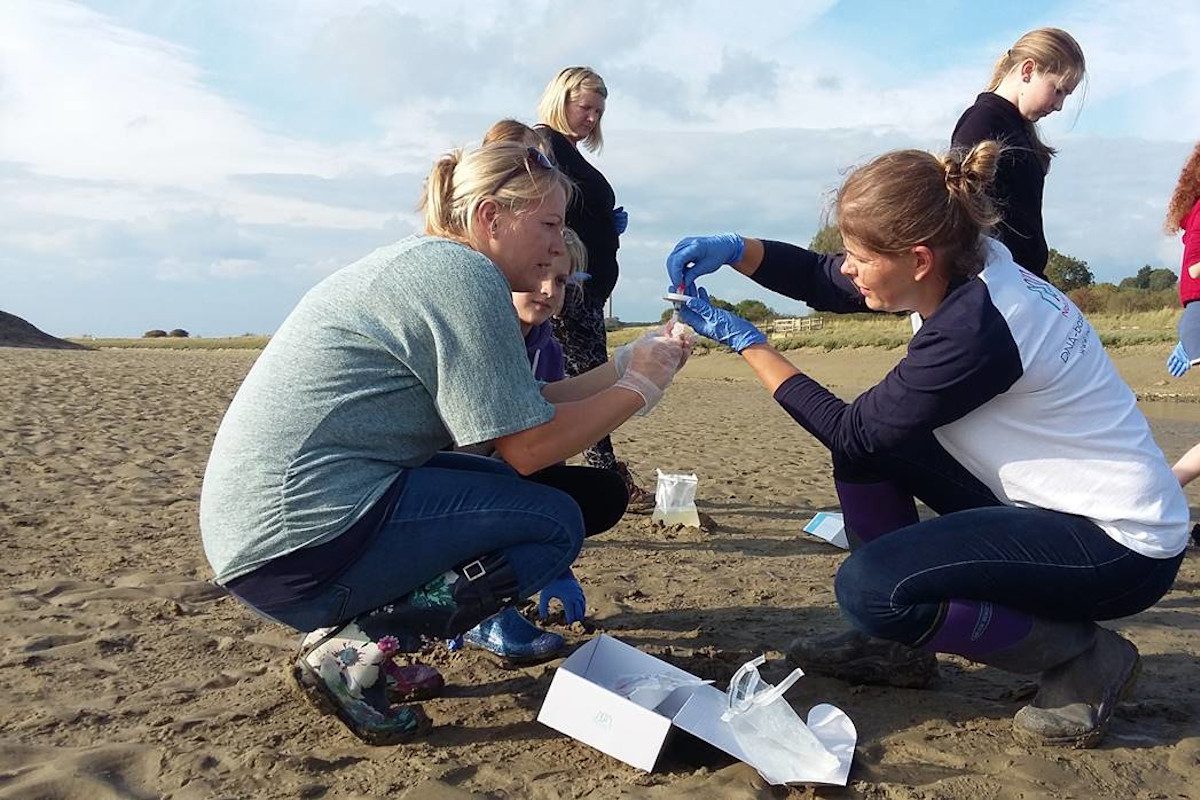
- Launch of the first large-scale environmental DNA project using citizen science to monitor the health of rivers
- The 1000 Rivers eDNA project is a non-profit initiative launched by NatureMetrics and partners to develop a database of 1000 rivers around the North Atlantic
- This database is a vital underpinning for conservation efforts amidst escalating threats faced by freshwater species
The 1000 Rivers eDNA Project, the first large-scale environmental DNA project using citizen science to monitor waterways throughout the North Atlantic region, has now launched after an event on the banks of the River Adur in Sussex on 11 September.
1000 Rivers is a new non-profit project initiated by environmental technology company NatureMetrics in collaboration with the University of Hull and the University of the Highlands and Islands, which combines the power of citizen science with environmental DNA. Environmental DNA (eDNA) is genetic material shed by animals into their environment, which can be isolated from water or soil samples and used to identify the species found there.
The 1000 Rivers eDNA project aims to use eDNA to measure fish communities in 1000 rivers around the North Atlantic region to record the changes happening to these areas at an unprecedented scale. This extensive and vital database will be collected and filtered on-site by local citizen science volunteers and then analysed in the NatureMetrics labs using eDNA metabarcoding, a process which sequences the captured eDNA to discover which species are present. This allows simultaneous identification of many species without requiring the physical capture of species, as traditional surveying methods do.
The project launched on 11 September with the first of these citizen science sampling events on the River Adur, in partnership with the local Ouse and Adur Rivers Trust. Volunteers and local school children collected and filtered water from the site, using specially designed sampling kits, for analysis at Nature Metrics’ lab. The samples will be analysed over the coming weeks and the results sent to all volunteers. The data will become publicly available once the project is complete and act as an invaluable resource for scientists, researchers and conservation practitioners. As well as describing the fish community as a whole, a particular focus of the project is detection of the invasive pink salmon, the ecosystem impact of which is still poorly understood largely due to limited data on its presence.
There are escalating threats to waterways around the world, with only 14% of England’s rivers considered to be a healthy status and freshwater species declining faster than any other group. Increasing the available pool of baseline data is essential for any conservation efforts, providing the robust evidence basis required for management decisions.
Dr Kat Bruce, Managing Director of NatureMetrics said: “We are so excited to have officially launched the 1000 Rivers eDNA project and to add the River Adur species data to our growing database. Data on freshwater communities has never been more vital, and environmental DNA holds enormous potential in allowing a rapid expansion of the database to include data that may not otherwise be obtainable using traditional methods for biodiversity monitoring. eDNA is very powerful for identifying invasive species before they establish and conserving rare and endangered species before they become extinct. Seeing local communities come together to collect this data is fantastic, and we hope to work with many more rivers trusts and community groups throughout the UK and the rest of the world.”
Peter King, Director of Ouse and Adur Rivers Trust said: “We are delighted to be a partner of the 1000 Rivers eDNA project. The event yesterday was a great opportunity for our volunteers to get involved in collecting crucial baseline data on the River Adur and ultimately contributing to a much broader database spanning Europe and North America. This database will be hugely important in informing wide-ranging conservation efforts, and in expanding our understanding of the distribution and impact of the pink salmon as well as the broader diversity of threatened estuarine and freshwater communities.”






